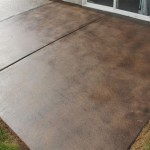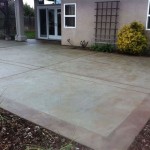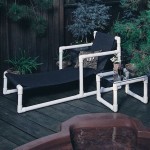How To Replace Patio Pavers
Patio pavers offer an attractive and durable surface for outdoor living spaces. However, over time, pavers can become cracked, chipped, stained, or uneven due to weathering, settling, or heavy use. Replacing damaged or unsightly pavers not only enhances the aesthetic appeal of a patio but also improves its safety and functionality. This article provides a comprehensive guide on how to effectively replace patio pavers, ensuring a long-lasting and visually appealing result.
Before embarking on the replacement process, a thorough assessment of the patio is crucial. Identify all pavers that require replacement, noting their size, shape, and color. This information will be essential when purchasing replacement pavers. Additionally, examine the surrounding pavers and the underlying base material to identify any potential issues that may have contributed to the damage, such as inadequate drainage or improper compaction. Addressing these underlying issues is critical to prevent future problems.
Gathering the necessary tools and materials is the next step. Having everything readily available will streamline the process and minimize disruptions. The following is a list of essential items:
*Replacement Pavers: Ensure the replacement pavers are identical in size, shape, and color to the existing pavers for a seamless match. Purchase slightly more than needed to account for potential cuts or damage.
*Safety Glasses: Crucial for protecting the eyes from flying debris during the removal and cutting process.
*Work Gloves: Provide hand protection and improve grip.
*Chisel and Hammer: Used to break apart damaged pavers and loosen cemented pavers.
*Brick Hammer: A specialized hammer designed for striking chisels and breaking masonry.
*Flathead Screwdriver or Putty Knife: Useful for removing sand from joints between pavers.
*Shovel: For moving and leveling base material.
*Hand Tamper or Plate Compactor: Used to compact the base material, ensuring a solid foundation.
*Level: Essential for ensuring the new pavers are level with the surrounding surface.
*Measuring Tape: For accurate measurements when cutting pavers.
*Paver Saw or Circular Saw with a Diamond Blade: Used to cut pavers to the desired size and shape (if needed).
*Wheelbarrow: For transporting materials such as sand and gravel.
*Sand: Used to fill the joints between the pavers. Polymeric sand is recommended for inhibiting weed growth.
*Broom: For sweeping away excess sand and debris.
*Garden Hose with a Spray Nozzle: For lightly wetting the sand to activate the polymeric properties.
*Knee Pads: Provide cushioning and comfort during extended periods of kneeling.
Removing Damaged Pavers
The initial step involves removing the damaged pavers. The method used will depend on whether the pavers are set in sand or mortar. For pavers set in sand, the process is relatively straightforward. For pavers set in mortar, additional care is needed to avoid damaging surrounding pavers.
First, use a flathead screwdriver or putty knife to remove the sand from the joints surrounding the damaged paver. This will loosen the paver and make it easier to lift. If the paver is cracked, carefully break it into smaller pieces using a chisel and hammer. This will reduce the force required to remove it and minimize the risk of damaging adjacent pavers. Once the paver is sufficiently loosened, carefully lift it out of its position. Use the shovel to clear away any remaining sand or debris from the base.
For pavers set in mortar, the removal process is more challenging. Use a chisel and brick hammer to carefully chip away the mortar surrounding the paver. Work slowly and methodically, applying gentle pressure to avoid cracking the adjacent pavers. Once the mortar is sufficiently removed, carefully pry the paver out of its position. If the paver is tightly secured, consider using a reciprocating saw with a masonry blade to cut through the mortar. After removing the damaged paver, use the chisel and hammer to remove any remaining mortar from the surrounding pavers and the base.
Preparing the Base
A solid and level base is essential for the longevity and stability of the replaced paver. Improper base preparation can lead to uneven settling and future damage. After removing the damaged paver and any remaining mortar or debris, inspect the existing base material. If it is compacted and level, only minor adjustments may be necessary. However, if the base is uneven or shows signs of settling, it will need to be re-leveled and compacted.
Use a shovel to add or remove base material as needed to create a level surface. A layer of compacted gravel is ideal as a base. Ensure the base extends slightly beyond the perimeter of the area the paver will occupy. Use a hand tamper or plate compactor to thoroughly compact the base material. This will create a firm and stable foundation for the new paver. Check the level of the base using a level and make any necessary adjustments. A slight slope is recommended for proper drainage.
Add a layer of sand over the compacted base material. This layer should be approximately 1 inch thick. Use a level to ensure the sand layer is perfectly level. This layer of sand will provide a cushion for the paver and allow for minor adjustments to ensure a flush fit with the surrounding pavers.
Installing the New Paver
With the base properly prepared, carefully place the new paver into position. Ensure it is flush with the surrounding pavers and that the joints are consistent in width. If the paver is slightly too high or low, adjust the sand layer underneath until it is perfectly level. Use a rubber mallet to gently tap the paver into place, ensuring it is firmly seated in the sand. Avoid using excessive force, as this can damage the paver.
If the new paver does not fit properly, it may need to be cut to size. Use a paver saw or a circular saw with a diamond blade to cut the paver to the desired shape and dimensions. Always wear safety glasses and a dust mask when cutting pavers. Carefully measure and mark the cutting line on the paver before cutting. Make slow, steady cuts to avoid chipping or breaking the paver.
Once the paver is properly positioned, fill the joints between the pavers with sand. Use a broom to sweep the sand into the joints, ensuring they are completely filled. For optimal results, use polymeric sand, which contains additives that help to prevent weed growth and stabilize the pavers. After filling the joints, lightly wet the sand with a garden hose and a spray nozzle. This will activate the polymeric properties of the sand and help it to harden, creating a durable and weed-resistant joint. Allow the sand to dry completely before walking on the pavers.
Following these steps will ensure a successful paver replacement, resulting in a patio that is both aesthetically pleasing and structurally sound. Regular maintenance, such as sweeping and occasional cleaning, will help to prolong the life of the pavers and maintain their appearance.

Base For Pavers How To Prep Lay A Paver Diy

Quick Patio Makeover Installing Pavers Over Old Concrete Paul Ricalde

How To Lay Patio Pavers
Dammann S Garden Company Diy Series How To Install Level Pavers And Patio Stones
.jpg?strip=all)
How To Install Patio Pavers Lv

How To Fix Uneven Patio Pavers

Easiest Patio Pavers You Ll Ever Install

How To Install Patio Pavers The Home Depot

How To Install A Diy Paver Patio The Easy Way Angela Marie Made

How To Lay Pavers Over Concrete A Step By Guide Diy
Related Posts








